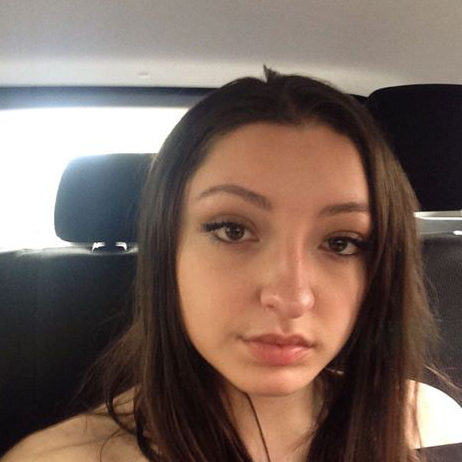My Hair: A Self Love Story
by Geena Garcia
Having curly hair is central to my identity. Not only does it allude to my ethnic background, or who I am, it is also a daily reflection of how I am and how I’m feeling. At 17 years old, I’m incredibly grateful for my hair, and it is one of my favorite features of myself- but it hasn’t always been that way.
Growing up, I always knew that I was “mixed”; my dad is from the small Central American nation of El Salvador and my mom is a mixture of various European ethnicities. As such, my mom, for the most part, didn’t really know what to do when my hair began to curl as a baby. Neither she nor any of her relatives had hair that was curly in the way mine was and because of this, I assume she was overwhelmed into doing things to my hair to “tame” it: braids, chemical relaxers and texturizers, etc etc. The earliest memory I recall of getting my hair done is of sitting in a salon all day while three Dominican women worked at straightening my curly hair that reached almost to my butt when wet. This is generally the way my hair was styled throughout my early childhood.
As a young child, I always knew that I naturally had curly hair, but I never considered it a part of myself because it was so often not styled naturally. In fact, when I got to around 10 or 11 and my mother began to leave doing my hair up to me, I was hard pressed to figure out what to do with it. For a couple of years, I styled my hair in a bun or ponytail and accessorized it with a headband or clips. I straightened my own hair for the very first time in middle school and fell in love with it. It was an easy and fast “fix” for my curly hair that I had for years, both implicitly and explicitly, been told was in need of being fixed or remedied.
The first time that I wore my hair naturally curly since being a child was toward the end of my sophomore year. Admittedly, and quite embarrassingly, it took me a great amount of courage to finally do this. To my surprise, my friends complimented my natural hair and questioned why I had never styled it the way I was beginning to. Since then, I straightening my hair has become much less frequent than it had been in my middle school days, and so infrequent that much earlier I would have never imagined it possible. Today, while I wish I were able to love my hair as I do now when I was younger, I am
Now, I have just detailed the history of my hair to be able to make a simple yet crucial point: that children, and young girls of color especially, end up internalizing some form of self hate through seemingly and intentionally innocent actions that are taken in regard to some physical feature. When my friends asked me why I never styled my hair naturally, I would have never admitted that it was because for the entirety of my developing years, I had been told that my hair was naturally not acceptable or desirable. The part of this story that I myself am at times astonished by is that my natural hair is generally considered conventionally “acceptable”- I have 3b/3c hair. I can only imagine how pronounced this struggle must be for girls of color, and black girls specifically whose hair types are even further from what is generally deemed acceptable.
Thankfully, I was able to overcome my very subtle and seldom talked about inner conflict, and as such the way I’ve written about it is objective and slightly stoic. However, in sharing this story I want to mainly relay how difficult and sometimes painful it was to arrive at the confidence and self-love that I now know in regard to my hair. Am I mad at my mother and various family members for unwittingly teaching my young self that her hair need to be “fixed”? No. Eurocentric beauty standards are so deeply a part of American culture that I understand why they did this. I know that writing this article will not change the deeply rooted beauty ideals in the U.S. and the world. I hope only to share one aspect of my history of self love in order to document a very common and yet so personal part being a girl.
Related Reading
Put on Your Warpaint: #BeautyMeans by Alina Wilson
What Beauty Means to Me by Tiffany Dameron

6 thoughts on “My Hair: A Self Love Story by Geena Garcia”